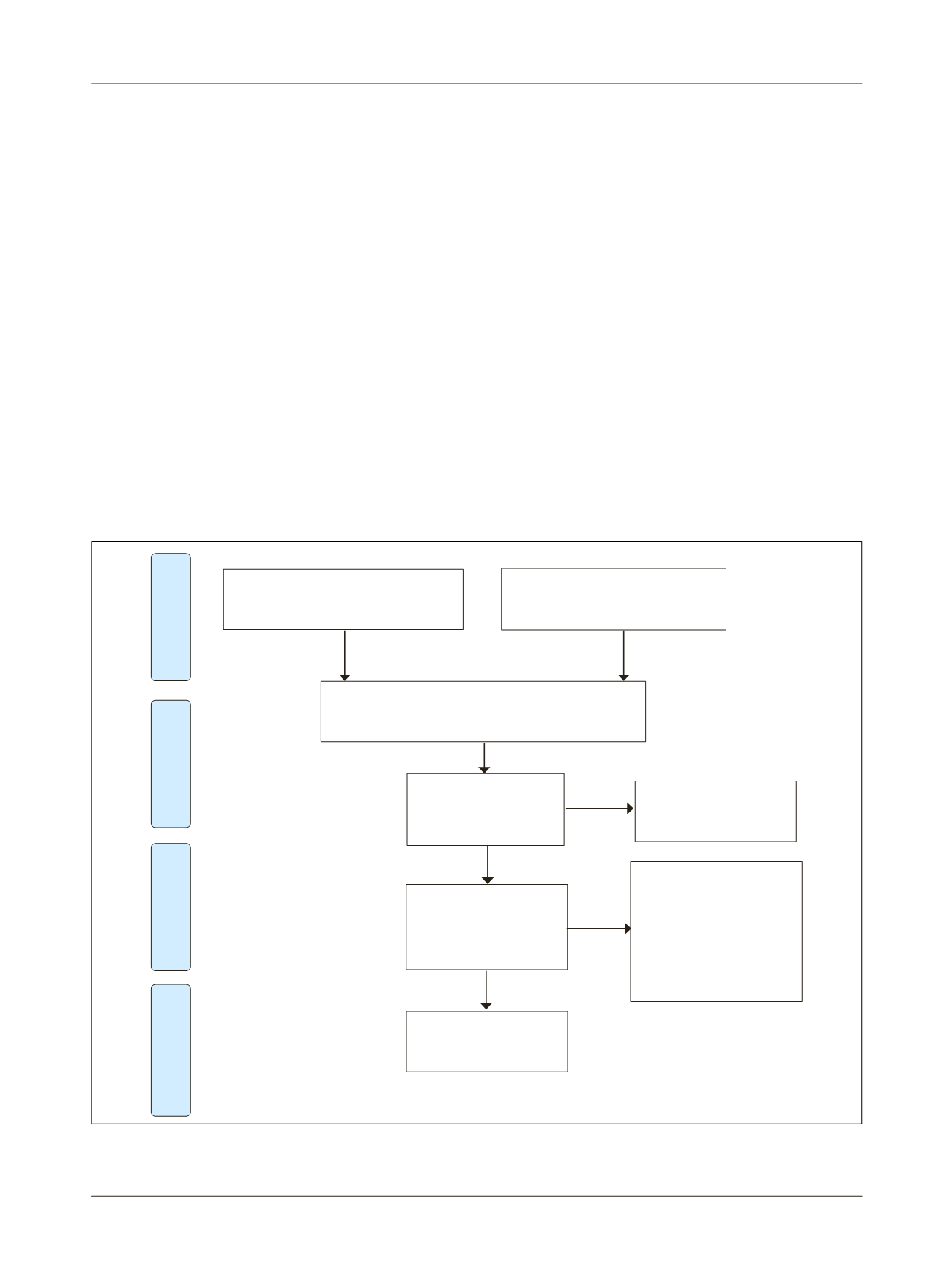

B
reast
cancer
screening
in
B
razil
. B
arriers
related
to
the
health
system
R
ev
A
ssoc
M
ed
B
ras
2017; 63(5):466-475
467
nosed at an advanced stage, due to the absence of an
organized network aimed at the early diagnosis of breast
cancer. There is no organized mammographic screening,
only isolated experiments.
3-5
When assessing the barriers related to mammography
screening, they can be synthetically divided into those
related to the health system, those related to education
or knowledge, and those related to adherence or attitude.
6
In Brazil, there are innumerous factors related to adher-
ence/attitude, including age, socioeconomic condition
and formal education. The education/knowledge catego-
ry includes the factors described above, associated with
the fact that mammography is not often indicated by
physicians, and patients do not seek tests when they do
not present symptoms or if they fear pain or cancer.
5
Bar-
riers related to the health system are difficult to assess as
there is no specific indicator. Thus, a critical evaluation
of the barriers related to the health system, which impact
on the screening of breast cancer, is justified.
M
ethod
We conducted a literature review using a systematic
search methodology to evaluate the barriers related to
mammography screening in Brazil. We did not evaluate
the methodology or quality of the study, but publica-
tions that expressed this matter. We searched the PubMed
database using as keywords “Breast Cancer” and “system
of health” and “Brazil or Brasil”. In the LILACS database,
we used as keywords “Breast neoplasms” and “Health
Systems.” PRISMA
7
methodology (Figure 1) based on
PICTOS (Population- Intervention- Comparator- Out-
come- Timing- Setting; Table 1) was adopted for article
selection. The articles were grouped according to the
subject addressed, trying to identify possible factors that
express the limitation of the health system.
On 12/16/2015, using this methodology, we were able
to identify 94 articles in the PubMed database and 43 pub-
lications in the Lilacs. We evaluated title and summary and,
after excluding 21 repetitive publications, we selected 51
FIGURE 1
PRISMA records flow diagram.
Identification
Screening
Eligibility
Included
Articles accessed through PubMed
(n=94)
Articles removed due to duplicity
(n=21)
Articles retrieved
Title and summary
(n=116)
Articles read in full
(n=51)
Articles in the study
(n=30)
Articles accessed through LILACS
(n=43)
Articles excluded
(n=65)
Reason for exclusion:
Mortality (n=7)
SUS post-treatment (n=5)
Global aspects (n=3)
Miscellaneous reasons (n=6)
















